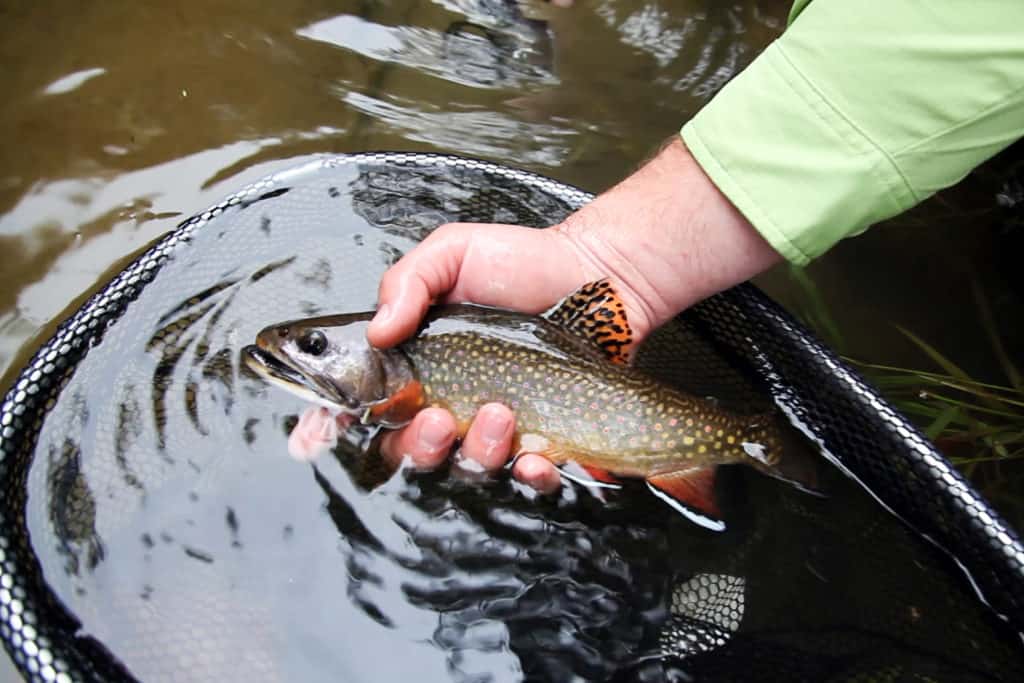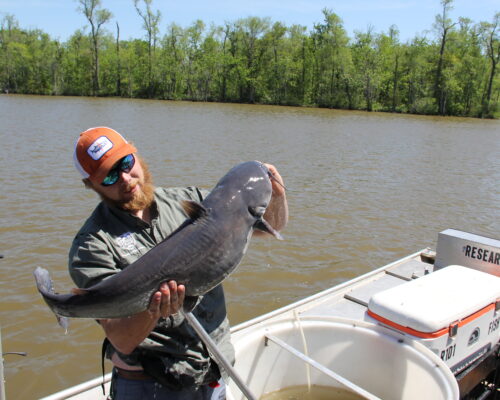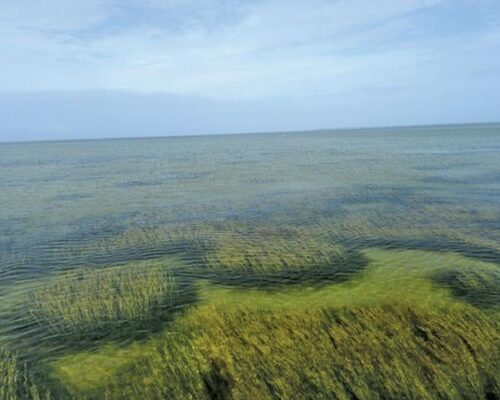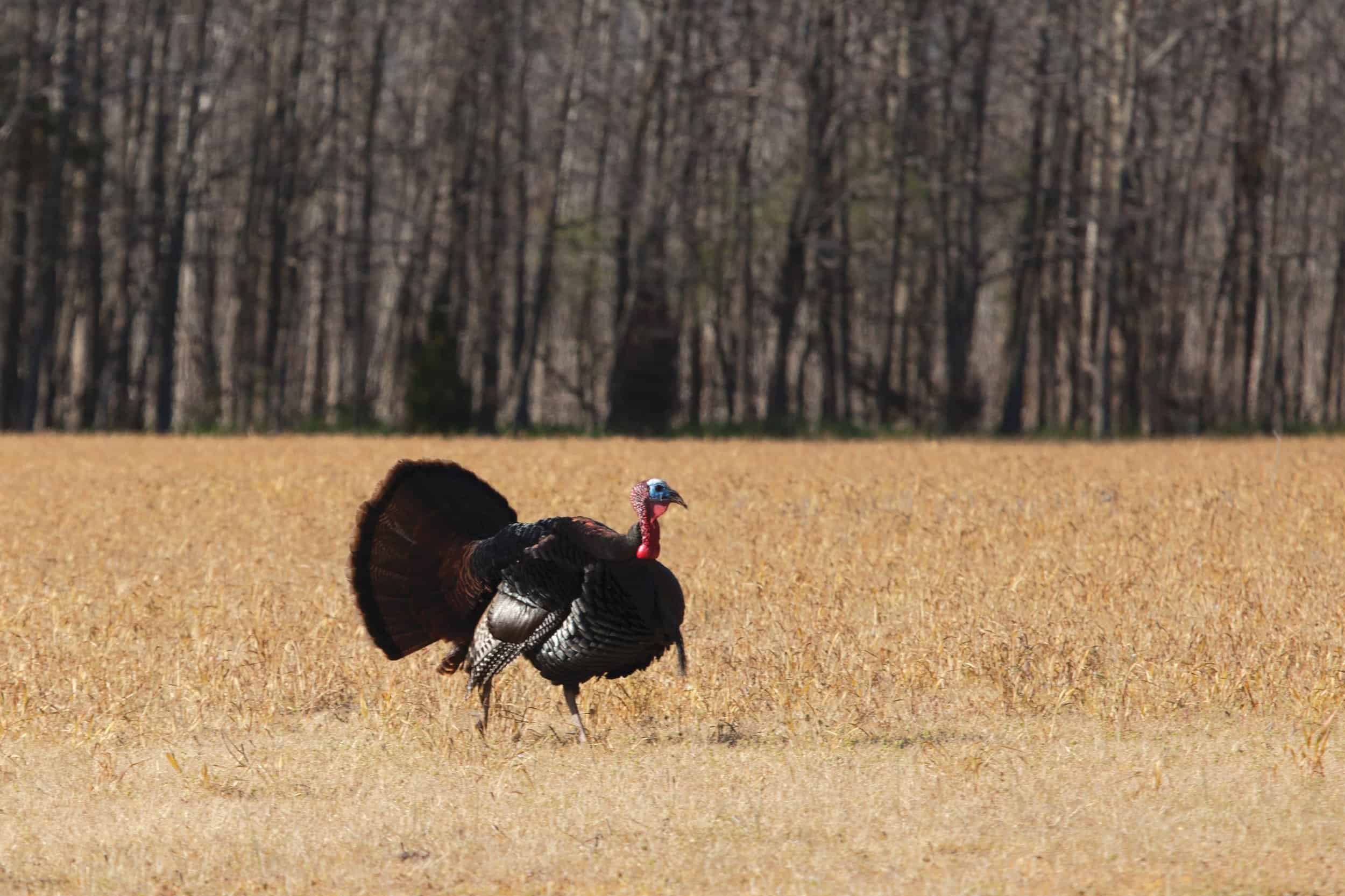When someone mentions “trout fishing,” my first inclination is to think of those spotted drums I’ve caught in the shallows of Tangier Sound rather than native brookies. It may surprise some people, but there’s excellent trout fishing to be had in the freshwater tributaries that drain into the Chesapeake Bay, and I have several fond memories of trying to match wits with wild trout in the quiet waters that pulse down from the majestic Blue Ridge Mountains. These trout streams only seem like they’re enveloped in wilderness; the fact is, most are closer than you may think, and close to modern amenities. Even if you live closer to the Atlantic Ocean than to the mountains, it’s likely you’re less than a four-hour drive away from wading a stream. And don’t let the approach of winter deter you; these waters are fishable from late October through the New Year.
Many of these places are located in the cradle of American history, places that whisper our nation’s sins and proudest moments. Recently, I fished such a place, Antietam Creek. On this day the water was low and temperature high, which translated into slow fishing. Still, it was a thrill to see Burnside’s sycamore again, a tree that witnessed the horrific September day 158 years ago when Americans raged against each other with never-before-seen ferocity.
I eased into the cool Antietam Creek, hoping to hook anything with fins, and made my way downstream, casting the four-weight fly outfit into pools, pockets, and riffles. The water level was low and the creek was slightly cloudy. On the first bend, I approached a pair of like-minded anglers. Stream encounters are an informal affair but not without protocol. I waited against the bank until one gentleman waved me on.
As our paths crossed, we chatted politely without purpose, per custom. The elder angler commented on the unusually turbid water. The younger of the two offered up, unsolicited and without a hint of superiority, that a cone-head Crystal Bugger in olive had done the trick, with the standard disclaimer only a small fish of no account hit his fly.
I have little doubt he made his recommendation after noticing my poor fly choice and felt obligated to gently correct that decision. Some fly fishers are like that, thankfully. As the pair walked upstream, I was pleased that I had a fly similar to what the stranger suggested. The change of flies didn’t improve my catch ratio, which stood at nil, but the exchange did buoy my faith in people at a time when I need it.
Perhaps my longtime friend Jeff Lewandoski, who operates Gunpowder River Angler in addition to his saltwater guide service, said it best when asked his take on freshwater trout: “It tests an angler’s instincts and requires patience and finesse…the slightest differences in approach, presentation, and choice of techniques (usually) means the difference between just fishing or catching.” It is this challenge and the tranquil setting that I find so appealing. These excursions spark great joy within me, taking me to places where I can fish with riveted focus or simply let my thoughts float downstream, and no one can tell the difference. Oftentimes neither can I, and perhaps that’s the best part.
I offer you a mere sampling of the many trout fishing holes that abound in the Chesapeake watershed’s sweet water. It’s more than likely you’ll run out of time before you run out of places to cast your line.
Where to Fish
For a small state, Maryland has outsized trout action. From my home in Annapolis, the state parks offer great mountain vistas and good trout fishing. Each fall for many years I’d camp at Savage River State Park, which at 54,000 acres is the largest park in the state forest system. Poplar Lick and Big Run were two of my favorite places to fish.
Formed from the coldwater springs born of the Allegheny Mountains, the Savage River is one of Maryland’s top fishing destinations for trophy wild brook and brown trout. This tributary of the upper Potomac River also holds rainbow trout. Biologists estimate that adult trout densities measure roughly 1,000 fish per mile throughout most of the river. Brown trout dominate the population, but there are plenty of brookies. Nearby Youghiogheny River is also a good choice for trout bums.
The Potomac’s North Branch may be considered a “must fish” stretch of trout sweet water. While nothing is ever guaranteed, it is possible to score a trout “Grand Slam”— brook, brown, rainbow, and cutthroat trout—in the upper catch-and-release section. From the Keyser to Cumberland section of the river, smallmouth bass dominate the scene but panfish are also present. Other good trout waters include the Casselman as well as the upper Gunpowder and Patuxent rivers and Morgan Run and Big Hunting Creek.
The Old Line State’s neighbor Virginia boasts more than 2,800 miles of trout streams, and because the season is open year-round, you’ll never tire of trying new streams to fish. Virginia’s diversified trout habitat supports both wild and stocked trout in good abundance in the spring. Two prime destinations are the Blue Ridge and Allegheny mountains’ streams. The high elevation keeps water temperatures relatively low year-round, and you cannot beat the views of the region’s picturesque valleys, which contain limestone spring creeks that trout love.
Douglas Dear loves fly fishing so much that in 2003, he, his wife Jennifer, and their two boys purchased land in Virginia’s Madison County to found Rose River Farm, an exceptional fly fishing getaway that’s a relatively easy drive from Washington, D.C. and other Mid-Atlantic cities.
Dear says Rose River Farm offers an uncrowded fly-fishing experience similar to the fishing anglers enjoy in western mountain states such as Colorado and Montana. Local streams offer wide stretches of rocky bottom, making wading and executing a 50-foot cast easier.
Good waters to fish for reliable trout action in Virginia including Hogue Creek, Passage Creek, Shenandoah River, and Madison Run. Moving south along the mountain chain, the Rapidan River, North River (both the tailwater and gorge), and Shawvers Run are good picks. Try casting flies at Mill Creek and the north and south fork of the Tye River. In the far western part of the state, Roaring Run and feeder creeks of the Roanoke River as well as Mayo and Dan rivers are worth wading.
Fly outfits from three weight to five weight are ideal. Small black and brown stoneflies, and black, tan or cream midges work well in the spring. Also, make sure you have plenty of dark-colored wooly buggers (#16 to #20), as well as crayfish and leech patterns. Closer-style flies in various weights and sizes (#6 to #1) are perfect for panfish.
As you’d expect, local outfitters offer canoe and kayak rentals and guided trips on many of the larger stretches of trout water. Do-it-yourselfers can easily while away several hours, or several days, exploring wild trout streams found throughout the Bay watershed.
Conservation Efforts
Without question, COVID-19 has stolen something from almost everyone in 2020. Yet, if there is the thinnest of silver linings to this ongoing tragedy, at least there seems to be a growing appreciation and respect for the outdoors. Perhaps that spark could ignite into real action to protect and restore forests from unsound development.
A couple years back, John Neely, a Trout Unlimited (TU) Life Member, told me the future is looking better for wild trout in western Maryland. And by and large, there are other examples of encouraging progress in other parts of the Bay watershed, though much more needs to be done.
“The upper Savage River drainage is the largest intact wild trout habitat south of Maine,” he told me a couple years ago. “With 120 miles of interconnected streams, it supports a healthy population of Maryland’s only remnant fish from the last ice age, the wild brook trout.”
Neely explained that almost twenty years ago, Maryland joined other eastern states to undertake a brook trout initiative that called for zero creel, no use of bait, and catch-and-release only in the Savage River watershed.
“Because of these conservation measures, there has been strong recruitment in young-of-year and the population has taken off,” he said. “Tributary streams to the Savage River, such as Poplar Lick, Big Run, Middle Fork, and to a lesser extent Dry Run, regularly support 1,200–1,400 wild brook trout per mile. And it’s not uncommon now to catch 10- to 12-inch brookies.”
And it’s not just the brookies’ resurgence in the Savage that has anglers encouraged. The upper Casselman and Youghiogheny Rivers (the only two streams in Maryland that flow north and eventually spill into the Ohio River) are also on the mend. Decades of work by the Maryland Department of Natural Resources and its partners at the Maryland Department of the Environment and the Youghiogheny River Watershed Association to redeem the Casselman River watershed in Garrett County are paying off.
Once awash in chemical pollutants from abandoned coal mines that nearly wiped out the brook trout populations, the streams are healthy enough to welcome the brook trout’s return like prodigal sons and daughters, and as a result that has meant better trout fishing opportunities in Maryland.
But it seems like every other week, conservation-minded anglers have to rally to beat back yet another ill-conceived proposal that threatens stream health, forests, and recreational fishing. Thankfully, angling conservation groups are usually on top of things.
They recognize that while the minutia of state and federal rules can be confusing and complicated to most of us, it is crucial to focus on the bigger picture. Opening up the public’s natural filters to unsound development not only impacts wildlife and aquatic habitats and curtails recreational opportunities, it also potentially infiltrates and degrades aquifers. It is true that not everyone fishes (heathens!), but everyone needs clean drinking water.




